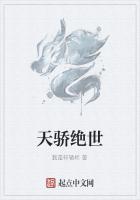"Calopogon," says Professor Robertson, who knows more about the fertilization of American wild flowers by insects than most writers, "is one of a few flowers which move the insect toward the stigma....There is no expenditure in keeping up a supply of nectar, and the flower, although requiring a smooth insect of a certain size and weight, suffers nothing from the visits of those it cannot utilize.Then, there is no delay caused by the insect waiting to suck; but as soon as it alights it is thrown down against the stigma.This occurs so quickly that, while standing net in hand, I have seen insects effect pollination and escape before I could catch them.So many orchids fasten their pollinia upon the faces and tongues of insects that it is interesting to find one which applies them regularly to the first abdominal segment.Mr.Darwin has observed that absence of hair on the tongues of Lepidoptera (butterflies and moths) and on the faces of Hymenoptera (bees; wasps, etc.) has led to the more usual adaptations, and sparseness of hair has its influence in this case.Species of Augochlora are the only insects on which I found pollinia.These bees are very smooth, depending for ornament on the metallic sheen of their bodies.An Halictus repeatedly pulled down the labella (lips) of flowers from which pollinia had not been removed; and the only reason I can assign for its failure to extract pollinia is that it is more hairy than the Augochlora.
COMMON PERSICARIA, PINK KNOTWEED, or JOINT-WEED; SMARTWEED(Polygonum Pennsylvanicum) Buckwheat family Flowers - Very small, pink, collected in terminal, dense, narrow, obtuse spikes, 1 to 2 in.long.Calyx pink or greenish, 5-parted, like petals; no corolla; stamens 8 or less; style 2-parted.Stem:
1 to 3 ft.high, ****** or branched, often partly red, the joints swollen and sheathed; the branches above, and peduncles glandular.Leaves: Oblong, lance-shaped, entire edged, 2 to 11in.long, with stout midrib, sharply tapering at tip, rounded into short petioles below.
Preferred Habitat - Waste places, roadsides, moist soil.
Flowering Season - July-October.
Distribution - Nova Scotia to the Gulf of Mexico; westward to Texas and Minnesota.
Everywhere we meet this commonest of plants or some of its similar kin, the erect pink spikes brightening roadsides, rubbish heaps, fields, and waste places, from midsummer to frost.The little flowers, which open without method anywhere on the spike they choose, attract many insects, the smaller bees (Andrena)conspicuous among the host.As the spreading divisions of the perianth make nectar-stealing all too easy for ants and other crawlers that would not come in contact with anthers and stigma where they enter a flower near its base, most buckwheat plants whose blossoms secrete sweets protect themselves from theft by coating the upper stems with glandular hairs that effectually discourage the pilferers.Shortly after fertilization, the little rounded, flat-sided fruit begins to form inside the persistent pink calyx.At any time the spike-like racemes contain more bright pink buds and shining seeds than flowers.Familiarity alone breeds contempt for this plant, that certainly possesses much beauty.
The LADY'S THUMB (P.Persicaria), often a troublesome weed, roams over the whole of North America, except at the extreme north -another illustration of the riotous profusion of European floral immigrants rejoicing in the easier struggle for existence here.
Its pink spikes are shorter and less slender than those of the preceding taller, but similar species, and its leaves, which are nearly seated on the stem, have dark triangular or lunar marks near the center in the majority of cases.
An insignificant little plant, found all over our continent, Europe, and Asia, is the familiar KNOT-GRASS or DOORWEED (P.
aviculare), often trailing its leafy, jointed stems over the ground, but at times weakly erect, to display its tiny greenish or white pink-edged flowers, clustered in the axils of oblong, bluish-green leaves that are considerably less than an inch long.
Although in bloom from June to October, insects seldom visit it, for it secretes very little, if any, nectar.As might be expected in such a case, its stem is smooth.
When the amphibious WATER PERSICARIA (P.amphibium) lifts its short, dense, rose-colored ovoid or oblong club of bloom above ponds and lakes, it is sufficiently protected from crawling pilferers, of course, by the water in which it grows.But suppose the pond dries up and the plant is left on dry ground, what then?
Now, a remarkable thing happens: protective glandular, sticky hairs appear on the epidermis of the leaves and stems, which were perfectly smooth when the flowers grew in water.Such small wingless insects as might pilfer nectar without bringing to their hostess any pollen from other blossoms are held as fast as on bird-lime.The stem, which sometimes floats, sometimes is immersed, may attain a length of twenty feet; the rounded, elliptic, petioled leaves may be four inches long or only half that size.From Quebec to New Jersey, and westward to the Pacific, the solitary, showy inflorescence, which does well to attain a height of an inch, may be found during July and August.
Throughout the summer, narrow, terminal, erect, spike-like racemes of small, pale pink, flesh-colored, or greenish flowers are sent upward by the MILD WATER PEPPER (P.hydropiperoides).It is like a slender, pale variety of the common pink persicaria.
One finds its inconspicuous, but very common, flowers from June to September.The plant, which grows in shallow water, swamps, and moist places throughout the Union and considerably north and south of it, rises three feet or less.The cylindric sheaths around the swollen joints of the stem are fringed with long bristles - a clue to identification.Another similar WATER PEPPERor SMARTWEED (P.hydropiper) is so called because of its acrid, biting juice.















